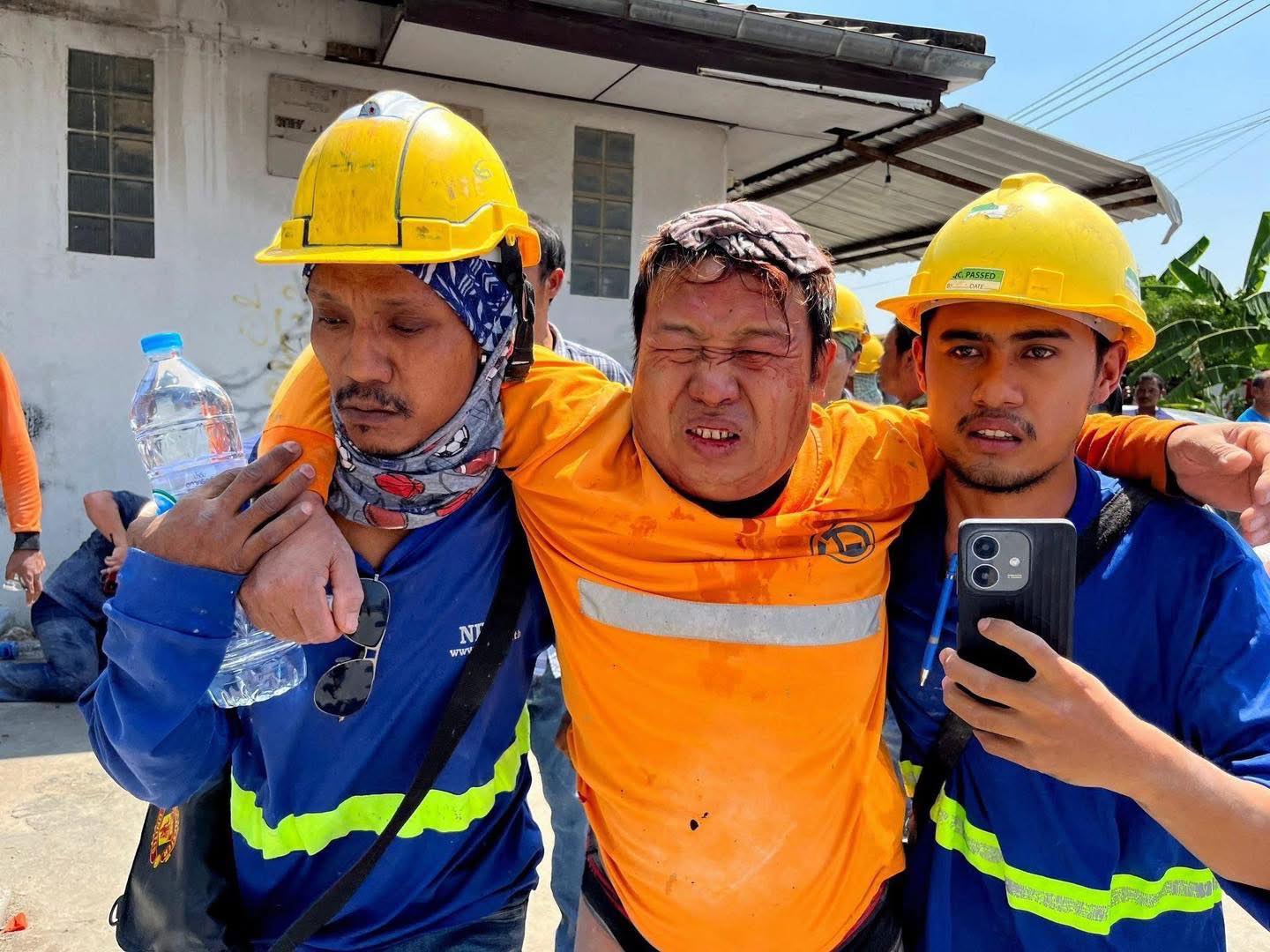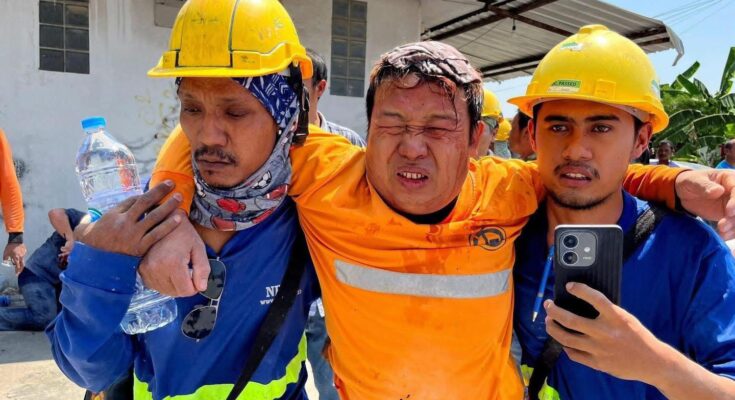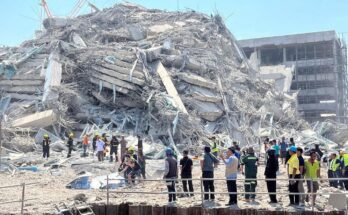Mandalay, Myanmar – March 28, 2025
A catastrophic earthquake measuring 7.7 on the Richter scale struck central Myanmar at 12:50 PM local time on March 28, 2025. The epicenter was located 17 kilometers west of Mandalay at a shallow depth of 10 kilometers. The quake, the strongest recorded in Myanmar since 1930, triggered multiple aftershocks, with the most severe registering at 6.4 in magnitude【10】.

Casualties and Damage
The powerful tremors caused widespread devastation, particularly in Mandalay, Sagaing, Bago, and Magway regions, as well as eastern Shan State. Reports indicate that at least 150 people have lost their lives, while hundreds more have been injured【8】. The full extent of casualties is expected to rise as rescue operations continue in the hardest-hit areas.
One of the most significant losses is the historic Ava Bridge in Mandalay, which collapsed into the Irrawaddy River. Additionally, religious shrines, residential buildings, and hospitals have sustained heavy damage. In Sagaing, a mosque partially collapsed, killing three people【9】. Numerous roads in Naypyidaw and Mandalay have developed deep cracks, further complicating rescue and relief efforts【9】.
Emergency Response and Humanitarian Crisis
The Myanmar military government has declared a state of emergency in the affected regions and has mobilized emergency response teams to assist victims. Major General Zaw Min Tun, the junta spokesperson, made an urgent appeal for blood donations to hospitals in Mandalay, Sagaing, and Naypyidaw, which are struggling to treat the influx of injured people【8】.
Despite the urgency, the ongoing civil conflict in Myanmar poses significant challenges to delivering aid. Many affected areas remain difficult to access, and there are concerns about the government’s ability to provide swift relief to those in need【8】. The international community has expressed concerns, with India offering assistance to both Myanmar and neighboring Thailand, which also experienced tremors from the earthquake【9】.
Impact on Neighboring Countries
The earthquake’s force extended beyond Myanmar’s borders, affecting Thailand and India. In Bangkok, a high-rise building under construction collapsed, killing three workers and trapping several others. The tremors also forced residents and tourists to evacuate buildings in panic【9】.
In India, tremors were felt as far as Delhi, though no major damage was reported【9】. However, the widespread nature of the earthquake highlights the region’s vulnerability to seismic activity along the Sagaing Fault Line, which runs through central Myanmar【10】.
Historical Context and Future Risks
Myanmar is no stranger to earthquakes, with the Sagaing Fault being one of the most active seismic zones in Southeast Asia. The last major earthquake of this magnitude struck the country in 1930, causing severe damage and loss of life【10】. Historically, earthquakes of magnitude 7 or higher occur in Myanmar approximately every 19 years【10】.
Seismologists warn that aftershocks are likely to continue for several days or weeks, posing further risks to already weakened buildings. The Myanmar Department of Meteorology and Hydrology has urged residents to stay away from unstable structures and be prepared for possible secondary tremors【10】.
Challenges in Relief Efforts
With the country already facing economic turmoil and political instability due to an ongoing civil war, humanitarian groups fear that relief operations will be slow and inadequate【8】. Many international organizations have limited access to Myanmar, and local relief teams lack the necessary resources to handle a disaster of this scale【8】.
The situation is further exacerbated by damage to roads and communication infrastructure, making it difficult to coordinate relief efforts. Emergency shelters are being set up, but there is an urgent need for food, clean water, and medical supplies【8】.
Global Response and Aid Initiatives
Several countries and international organizations have expressed their willingness to assist Myanmar. The United Nations has pledged humanitarian support, while neighboring countries, including India and China, are exploring ways to send aid【9】. However, diplomatic tensions and Myanmar’s internal instability may delay the arrival of much-needed assistance【8】.



